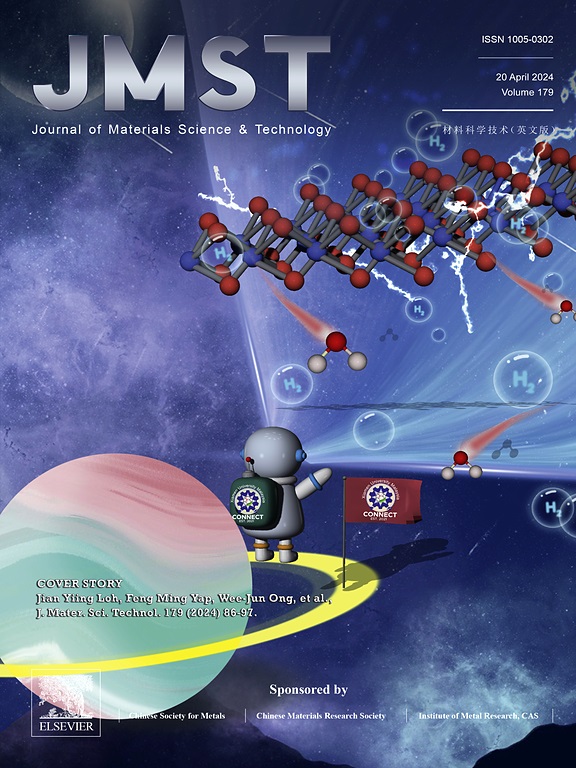Lattice match-enabled Zn3In2S6@CdS S-scheme heterojunction with S covalent bond bridge for simultaneous H2O2 photosynthesis and H2 production
IF 14.3
1区 材料科学
Q1 MATERIALS SCIENCE, MULTIDISCIPLINARY
引用次数: 0
Abstract
The key to realizing artificial photosynthesis of hydrogen peroxide coupled with hydrogen generation lies in the construction of efficient bifunctional photocatalysts. Herein, we have successfully prepared core-shell Zn3In2S6@CdS (ZIS@CdS) S-scheme heterojunction with matched interfacial lattices and S covalent bonding bridges by ion-exchange method. The combination of density functional theory calculations and experimental tests exhibit that the ZIS@CdS heterojunction interface with a lattice mismatch of ∼5% and the presence of two S covalent bonding forms, which provides stable and efficient channels for photogenerated charge transfer. Moreover, the photogenerated charges at the ZIS@CdS heterojunction interface follow the S-scheme transfer pathway, enabling spatial charge separation and high redox potentials. Under the synergistic effect of the matched interfacial lattice, covalent bond bridges, and built-in electric field, the ZIS@CdS heterojunction achieves an impressive H2 evolution rate of 195.9 μmol g−1 h−1 and H2O2 production rate of 92.0 μmol g−1 h−1 without the need of sacrificial agent and oxygen bulging, respectively. This work verifies that coupling lattice matching and covalent bonding is an effective strategy for constructing efficient bifunctional photocatalysts.

点阵匹配Zn3In2S6@CdS S方案异质结与S共价键桥同时用于H2O2光合作用和制氢
实现双氧水人工光合作用与制氢耦合的关键在于高效双功能光催化剂的构建。本文采用离子交换方法成功制备了具有匹配界面晶格和S共价键桥的核壳异质结Zn3In2S6@CdS (ZIS@CdS)。密度泛函理论计算和实验测试相结合表明,ZIS@CdS异质结界面的晶格失配为~ 5%,存在两种S共价键形式,为光生电荷转移提供了稳定有效的通道。此外,ZIS@CdS异质结界面处的光生电荷遵循S-scheme转移途径,实现了空间电荷分离和高氧化还原电位。在匹配的界面晶格、共价键桥和内置电场的协同作用下,ZIS@CdS异质结在不需要牺牲剂和氧胀形的情况下,H2的析出速率分别为195.9 μmol g−1 h−1,H2O2的生成速率为92.0 μmol g−1 h−1。本研究验证了偶联晶格匹配和共价键是构建高效双功能光催化剂的有效策略。
本文章由计算机程序翻译,如有差异,请以英文原文为准。
求助全文
约1分钟内获得全文
求助全文
来源期刊

Journal of Materials Science & Technology
工程技术-材料科学:综合
CiteScore
20.00
自引率
11.00%
发文量
995
审稿时长
13 days
期刊介绍:
Journal of Materials Science & Technology strives to promote global collaboration in the field of materials science and technology. It primarily publishes original research papers, invited review articles, letters, research notes, and summaries of scientific achievements. The journal covers a wide range of materials science and technology topics, including metallic materials, inorganic nonmetallic materials, and composite materials.
 求助内容:
求助内容: 应助结果提醒方式:
应助结果提醒方式:


